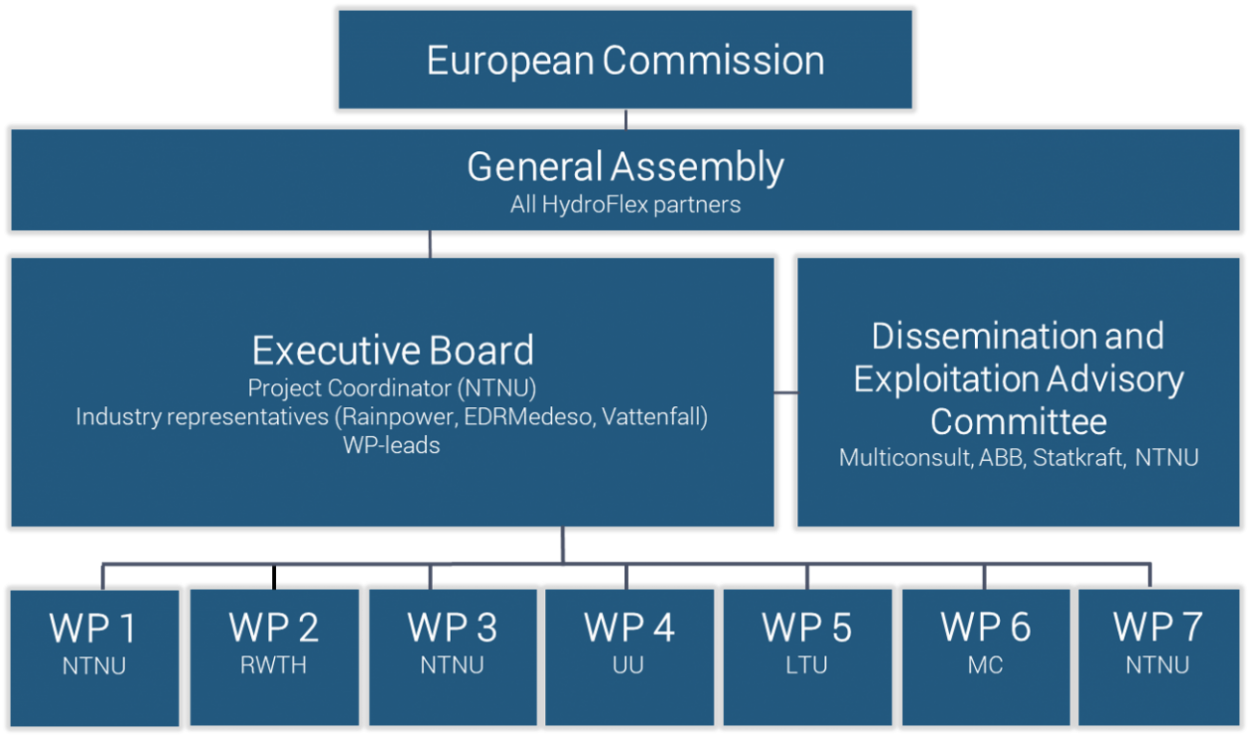Increasing the value of Hydropower through increased Flexibility
HydroFlex (Increasing the value of Hydropower through increased Flexibility) is a research and innovation action with a budget of €5,7m funded under the EU Horizon 2020 programme “H2020-EU.3.3.2 – Low-cost, low-carbon energy supply”. HydroFlex addresses the technology-specific challenge “Hydropower: Increasing flexibility of hydropower” of the Work Programme Topic “LCE-07-2016-2017 – Developing the next generation technologies of renewable electricity and heating/cooling”, which focuses on the need to develop new technologies, generators and turbine designs to increase the flexibility of hydropower plants while mitigating environmental impacts.
HydroFlex is running for four years (from May 1st 2018). It is coordinated by NTNU, the Norwegian University of Science and Technology, in Trondheim, Norway, and has in total 16 research and industry partners from five European countries.
The HydroFlex project aims towards scientific and technological breakthroughs to enable hydropower to operate with very high flexibility in order to utilise the full power and storage capability. The project will create the environmental, social and technical basis for successful future industrial developments by performing well-focused research and innovation activities on the key bottlenecks of hydropower units that restrict their operating range and limit their flexibility.
The commitment made under the Paris Agreement to cut greenhouse gas emissions has been an important contributor to the increasing share of renewables in the European energy system. However, the variability of some renewable energy sources such as wind and solar poses a challenge when included in the energy system because it must be balanced by other energy sources. Hydropower, a renewable energy technology with a low carbon footprint, is such a balancing resource. Making hydropower more flexible will thus further increase its value in a future energy system. Therefore, the HydroFlex project focuses on key bottlenecks of hydropower plants that restrict their flexibility today while at the same time addressing the environmental and socio-economic impacts of increased flexibility.
The HydroFlex project is managed by the General Assembly, the Executive Board, the Dissemination and Exploitation Advisory Committee, and the Work Package Leaders. The Project Coordinator, NTNU, is the project’s interface with the European Commission.

The HydroFlex project uses five hydropower plants as reference sites for the research and innovation activities in the different work packages.
©Hans Blomberg
©Statkraft
©Statkraft
©Vattenfall
© Photographer Kristofer Ryde – NEGATIVE















